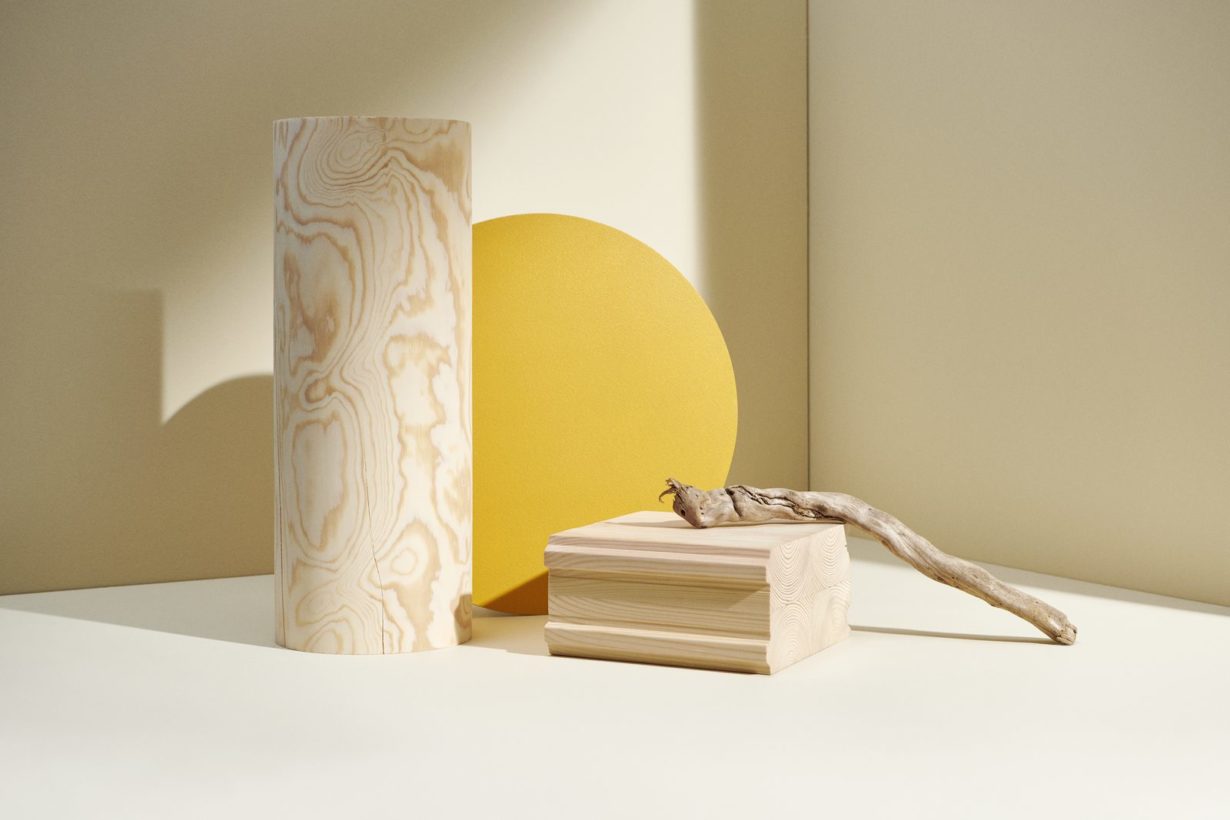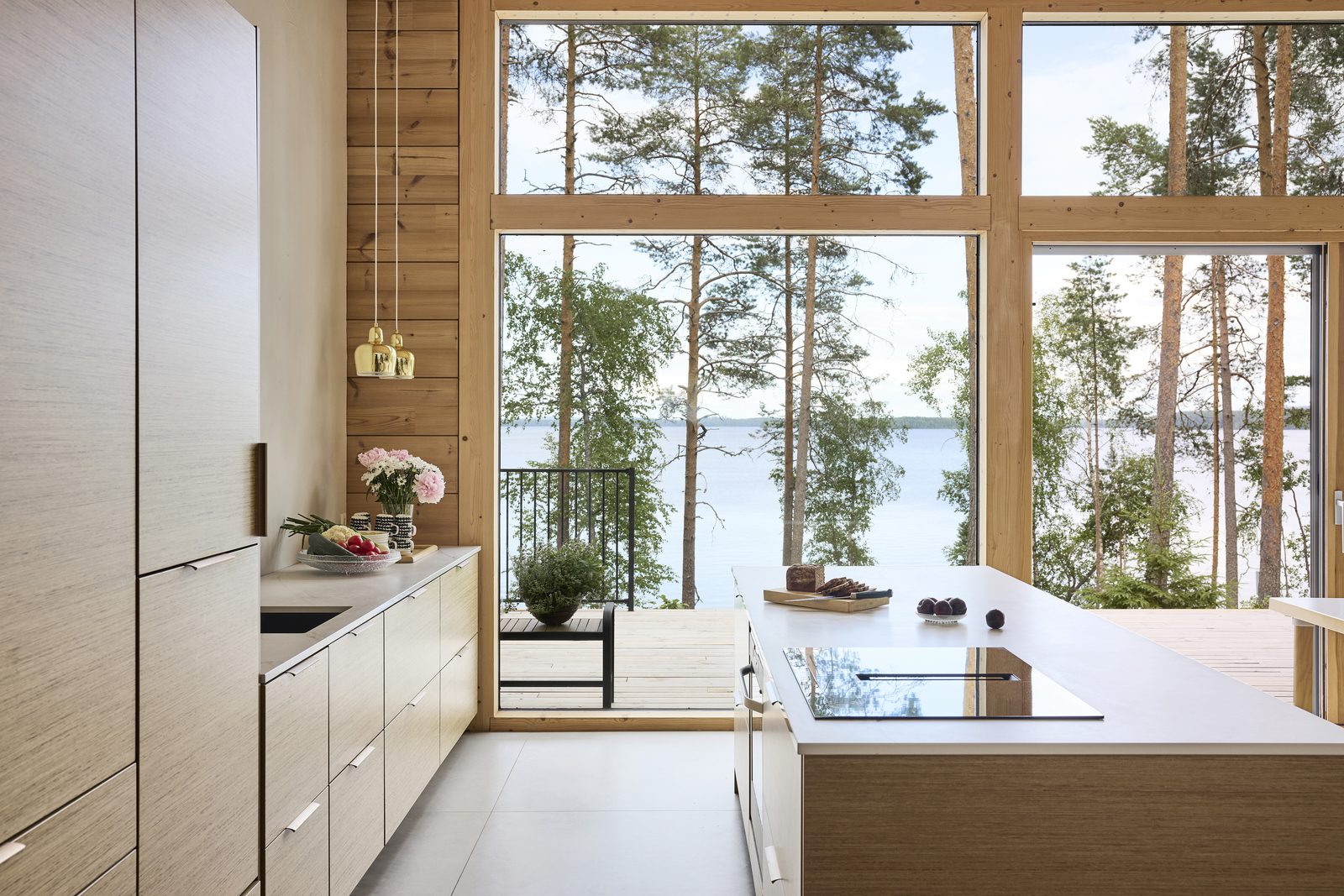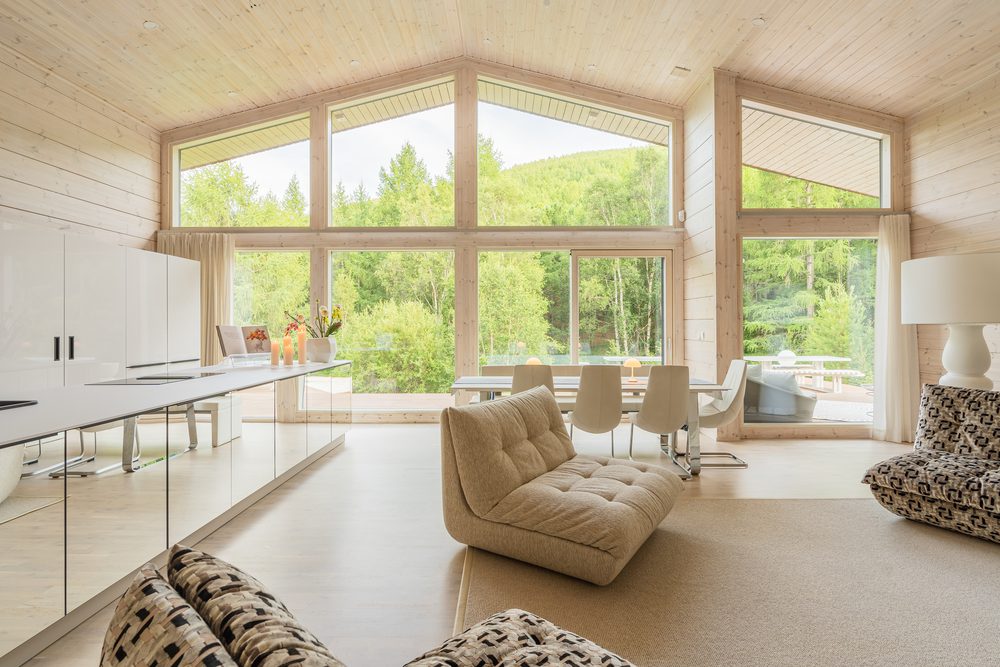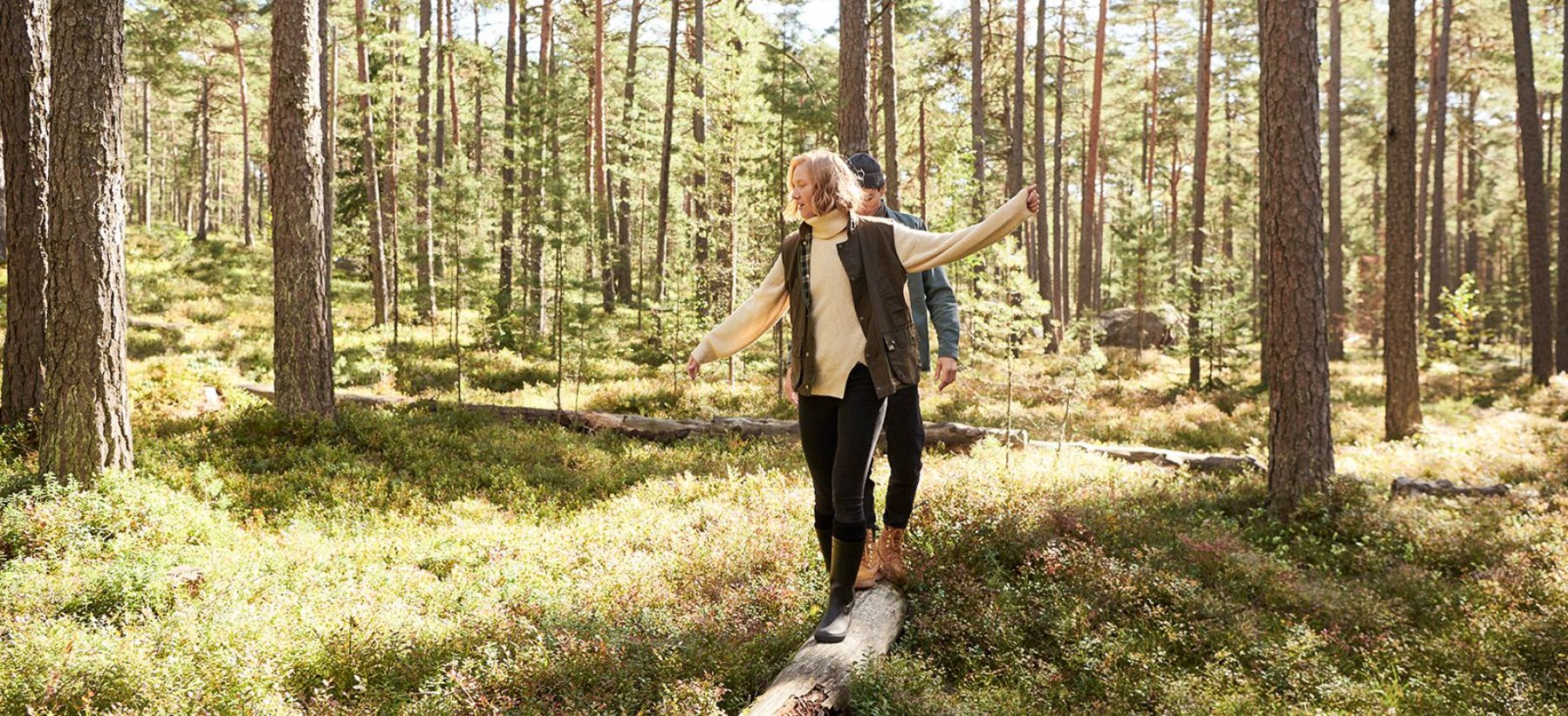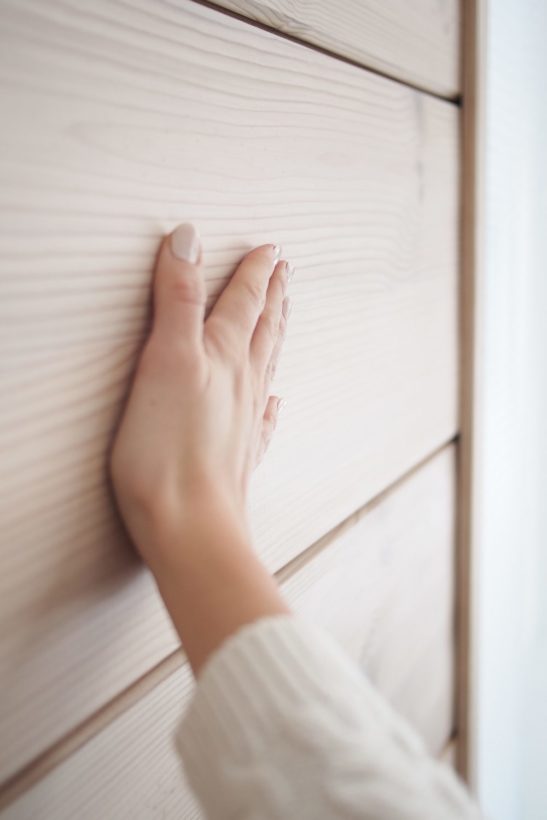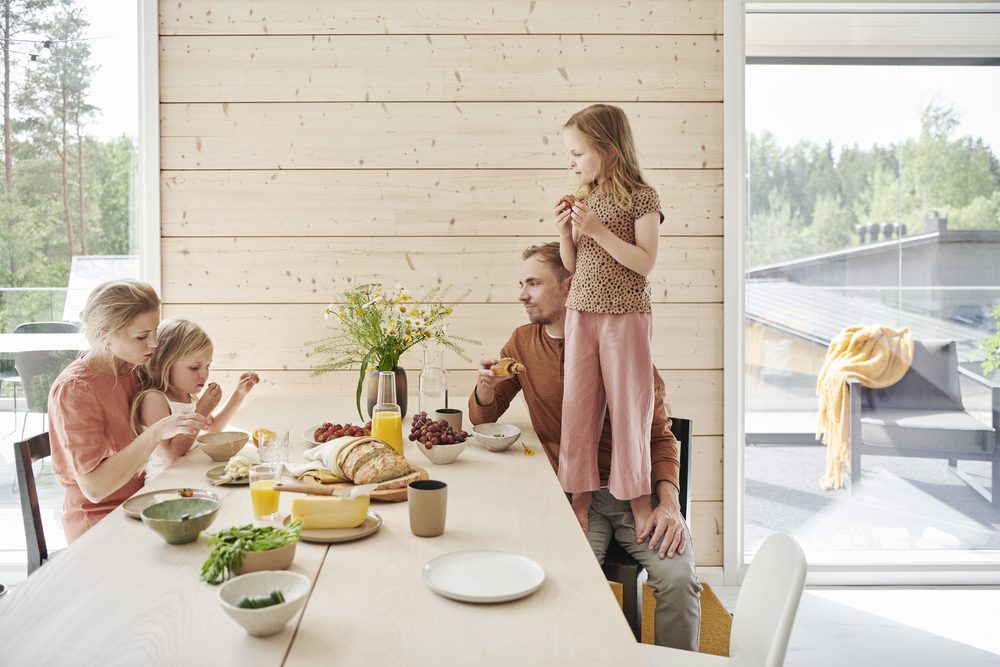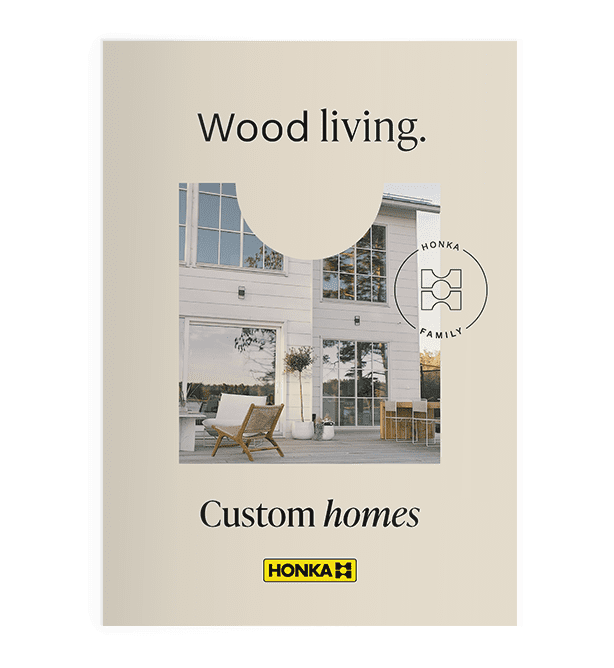We asked researchers and specialists why log homes are perceived to be so healthy and cosy. Senior Scientist Tuomo Ojanen from VTT Technical Research Centre of Finland explains how wooden surfaces help stabilise indoor air humidity in log buildings. Marjut Wallenius, Adjunct Professor of Psychology at Tampere University, says that wood, which is kind to all the senses, has been proven to alleviate stress. Tiina Vainio-Kaila, Research Scientist at VTT, describes how the natural extractives in wood eliminate pathogens on wooden surfaces. Honka’s Product Director Eino Hekali comments on why the choice of materials, such as the safe adhesives used in Honka’s lamellar logs, is so important for keeping the indoor air clean and safe.
Wood keeps the indoor air healthy and alleviates stress
Clean indoor air is one of the cornerstones of comfortable and healthy living.
“Wood is a hygroscopic material with the ability to even out indoor humidity levels. When relative humidity increases indoors due to spending a long time in a certain room, cooking or using the shower, for example, wooden surfaces absorb the moisture and even out the humidity peaks,” explains Senior Scientist Tuomo Ojanen from VTT.
Correspondingly, when the indoor air dries during the heating season, the wood releases the moisture it has absorbed back into the indoor air.
“Based on simulations, the annual hourly temperature and humidity conditions are significantly more likely to be comfortable in a log house than in building where the structures do not have a similar capacity to even out the humidity,” says Ojanen.
The balancing effect of wood lasts for weeks.
“In fluctuating weather conditions, the structures of a log house can contribute significantly to keeping the indoor air clean.”
Even though ventilation has a great impact on the freshness of indoor air, wooden surfaces can reduce harmful humidity peaks even more effectively than ventilation.
“In a study carried out by VTT and Honkarakenne in a double bedroom with all walls made of uncoated logs, the balancing effect of the structures was greater than that of the ventilation adjusted to the size of the room. Logs as a construction material do not, of course, replace proper ventilation, but wooden surfaces are proven to improve the perceived indoor air quality,” says Ojanen.
In fluctuating weather conditions, the structures of a log house can contribute significantly to keeping the indoor air clean.
Senior Scientist Tuomo Ojanen from VTT
VTT Senior Scientist Tuomo Ojanen: Log homes have better indoor air quality
According to Ojanen, both high and low humidity reduce living comfort.
“Humid indoor air is perceived as stuffy, and humidity strengthens the effect of any impurities in the air. A space with high humidity also feels warmer than a room with optimal humidity. Over an extended period of time, high humidity may increase the risk of moisture damage to the structures and promote the growth of microbes, fungi and moulds. Low humidity, on the other hand, can strain the respiratory system and mucous membranes, causing irritation.”
According to Honka’s Product Director Eino Hekali, many families feel that a log home increases wellbeing.
“People say that they feel good in their Honka home. Optimal humidity and the qualities of solid wood, promoting holistic wellbeing, play a key role in that,” says Hekali.
In a healthy house, the indoor air is clean. Honka’s log houses are built using natural materials and other components that emit the smallest possible amounts of synthetic contaminants, volatile organic compounds (VOCs). Honka uses pure, M1-certified construction materials whenever possible.
“For over a decade, Honka has been working hard to find the safest materials on the market and healthy options best suited for the structures,” says Hekali.
However, modern log houses also require some synthetic high-tech solutions in order to be durable and energy efficient.
“For example, for the adhesives and sealing materials used with the wooden structures, we have selected the best, safe M1-classified low-emission solutions.”
For over a decade, Honka has been working hard to find the safest materials on the market and healthy options best suited for the structures.
Eino Hekali, Product Director at Honkarakenne
Adjunct Professor of Psychology Marjut Wallenius: Wood is good for all the senses
According to Marjut Wallenius, Adjunct Professor of Psychology at Tampere University, studies show that wood is considered a soothing material. Wood not only looks but also feels pleasant.
“Wooden surfaces make a room feel warm and cosy. Touching wood creates a sense of safety and wood feels natural. The smell of wood is soothing, and the acoustics in a wooden building are very pleasant. People have similar experiences regardless of age, gender, wood species or nationality,” describes Wallenius.
Studies show: Wooden surfaces reduce stress
Wood relieves stress and has a positive effect on feelings.
“Spending time in a space containing wood or touching a wooden surface reduces stress. Changes in stress levels have been monitored by measuring, for example, blood pressure, electrodermal activity and heart rate variability,” explains Wallenius.
People are psychophysical entities, and our minds and bodies are closely connected. The soothing qualities of wood are probably contributable to the positive experiences and feelings related to it.
“Positive feelings are reflected in the autonomic nervous system, reducing the activity of the sympathetic nervous system and increasing the calming effect of the parasympathetic nervous system. The mechanism of influence is probably similar to that of spending time in the forest or otherwise in nature”, describes Wallenius.
The way wood is perceived and its effect on people have been studied around the world, particularly in Japan. According to Wallenius, the results speak for themselves.
“The consistency of the results gives the findings credibility. Based on research, it seems obvious that wellbeing and living comfort can be supported by using genuine wood in residential spaces.”
Particularly in the summer, Finnish nature provides easy access to forests and trees. When you have a home made of logs, you have access to wood all year round.
“Log is a relaxing material, familiar to Finns from holiday homes. Nowadays, more and more people want to enjoy the stress-alleviating qualities of wood on a daily basis. Outside Finland, a log home exuding the peace of nature is a relatively new thing, although the interest is increasing,” says Hekali.
Spending time in a space containing wood or touching a wooden surface reduces stress.
Marjut Wallenius, Adjunct Professor of Psychology at Tampere University
Tiina Vainio-Kaila, Research Scientist at VTT: Microbes die on wooden surfaces
In her dissertation, Tiina Vainio-Kaila, who has a PhD in Technology and acts as a Research Scientist at VTT, studied the antibacterial properties of wood and what happens to pathogens on wooden surfaces.
“Wood was contaminated with bacterial strains, such as Escerichia coli and Listeria monocytogenes. The contaminated wooden surface was then compared to a glass surface treated with the same bacteria. On the wooden surface, the bacteria died or their number reduced already within a few hours, whereas on the glass surface, they survived for much longer.”
Wood gets its antibacterial properties from the natural extractives, particularly the resin acids, it contains. These active substances are effective when the wood is uncoated.
The results of the study conducted in laboratory conditions can also be applied to practical living.
“Due to its antibacterial properties, uncoated wood is probably a good choice for surfaces in residential buildings that are not cleaned often, such as walls,” says Vainio-Kaila.
All the ways in which wood improves wellbeing and living comfort are not known yet. That being said, it seems obvious that log homes have healthier and happier residents.
“Future studies will probably show whether the beneficial effects of wood are due to the optimal humidity it provides or the overall effect that wood has on wellbeing because of the way it looks and smells, for example,” Hekali concludes.
Five reasons why Honka log houses are healthy and promote wellbeing
- Wood has a natural ability to even out indoor humidity levels. Good indoor air quality leads to reduced irritation of the respiratory system and mucous membranes.
- Honka log houses are built using as many M1-classified products, natural materials and low-emission items as possible to minimise the amount of synthetic contaminants, volatile organic compounds (VOCs), released into the indoor air.
- The adhesives and sealing materials used with the wooden structures of Honka log houses are safe and M1-classified.
- Sensory-friendly wood is proven to calm the mind and soothe the body, reducing stress levels.
- Wood is a naturally antibacterial material.
Honka Healthy House™
Uncompromisingly healthy log homes
At Honka, the design of houses starts with the needs of health-conscious customers and our solid wood building material, log. We are the pioneer of healthy log homes. In Honka log houses our aim is to have high-quality indoor air, M1-classified safe materials, moisture-safe structures developed through decades of product development, and a naturally relaxing, stress-relieving environment.
How can we help you?
Share your log home dreams with the nearest Honka representative. We will help you to realise them.
Get in touch
